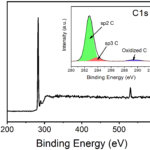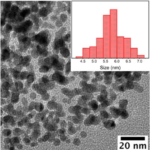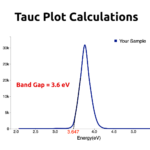Zirconium Diboride Nanoparticles Synthesis – (ZrB2) by using Zirconium Propoxide, Boric Acid, Sucrose and Acetic Acid via Sol-gel Method
Cite This in Your Publication
Zirconium Diboride Nanoparticles Synthesis – (ZrB2) by using Zirconium Propoxide, Boric Acid, Sucrose and Acetic Acid via Sol-gel Method - InstaNANO. https://instanano.com/all/nanomaterial-synthesis/nanocomposite/zirconium-diboride-nanoparticles-1/ (accessed April 29th, 2024).
Zirconium Diboride Nanoparticles Synthesis – (ZrB2) by using Zirconium Propoxide, Boric Acid, Sucrose and Acetic Acid via Sol-gel Method - InstaNANO. https://instanano.com/all/nanomaterial-synthesis/nanocomposite/zirconium-diboride-nanoparticles-1/ (accessed April 29th, 2024).
Zirconium Diboride (ZrB2) Nanoparticles Synthesis by using Zirconium Propoxide as precursor, Boric Acid, Sucrose and Acetic Acid via Sol-gel Method
-
CHECK LISTZirconium Propoxide (Zr(OPr)4), Boric Acid (H3BO3), Sucrose (C12H22O11), Acetic Acid (CH3COOH), Methanol (CH3OH), Acetylacetone (C5H8O2), Deionized Water, RB Flask, Dropper, Magnetic stirrer, Furnace.
-
STEP 1.Add 6.3ml Zirconium Propoxide and 1.2ml Acetylacetone in 25ml of Methanol. Stirrer it at room temperature.
-
STEP 2.Add 4ml of water dropwise and stirrer for 30 minutes at room temperature.
-
STEP 3.Add 2.5g Boric Acid and 2.9g Sucrose in 45ml of Acetic Acid in another RB flask. Stirrer for 30 minutes a 80°C.
-
STEP 4.Add Zirconium Propoxide solution (prepared in step-2) into Boric Acid solution (prepared in step-3) and stirrer for 4 hours at 60°C to form the wet gel.
-
STEP 5.Dry the formed wet gel at 120°C for 3 hours to form the final precursor.
-
STEP 6.Now grind the dried sample with mortar-pestle. And Calcine it at 1550°C for 4 hours at a slow ramping rate of 2-3°C/min.
-
RESULTSFinally, Zirconium Diboride (ZrB2) Nanoparticles are formed as Gray color after calcination.
-
Factors Affecting SynthesisCalcination (in STEP 6) can also be done in 3 steps. First 30-800°C with 5°C/min, then 800-1200°C with 3°C/min for 2 hours and finally 1200-1550°C with 2°C/min for another 2 hours. Cooling rate should be 5°C/min. This elaborated calcination can increase the crystallinity of the formed Zirconium Diboride (ZrB2) Nanoparticles.
-
NOTE: All the experiments should be done under the guidance of lab Incharge; and proper lab safety instructions.


























I do not have Zirconium Propoxide (Zr(OPr)4) but zirconyl chloride. What can be they way to make its oxides?
I used ZrO (powder) as a dopant on Nickle Oxide but every time the result on LSV appeared differently. Could you please tell me what could be the reason? Nickel oxide was prepared through the coprecipitation method using nickel chloride.